Some of the links in this post may be affiliate links.
I recently had the opportunity to visit Steve’s Leaves, a fantastic grower of tropical plants located near Dallas, Texas. I had the pleasure of touring the greenhouses, as well as having a nice chat with the owner, Steve Rosenbaum, as well as the operations manager, Darren Heppel.
We talked about the nursery, as well as a variety of houseplant care topics!
Upon pulling into the driveway and entering the greenhouse, I was greeted by Darren and beautiful sights and smells that only a lush greenhouse can offer.
The warm, humid air and inviting, dense greenery was a feast for the senses.
After a delightful tour of the greenhouse, divided up into a propagation section and a ready-for-sale section, we had a chat about the nursery and several miscellaneous houseplant care topics.

Table of Contents
Steve’s Leaves: The Business
Raffaele: How long have you had this business?
Steve: I started it when I was 18 and that was 42 years ago. I started it in my mother’s backyard in Dallas.
Raffaele: How did you get into plants?
Steve: It started when I was 13 years old and terrariums were very popular then. That was 1971. And they are popular again! But they were very popular then, and my mother had some as gifts and I started making my own terrariums and kind of messing around with them.
I graduated outside of the glass and started growing more and more, and when I was 18 I thought well I’ll make it my own business and see where it goes.
Raffaele: So you actually started selling when you were 18 years old?
Steve: Actually before that I had plant sales in the front yard.
Raffaele: So at some point did you get a greenhouse?
Steve: I was 19 when I got my first greenhouse. So everything else before that was grown on blocks and boards on the back patio. I even had the department of agriculture come out.
I didn’t even have my greenhouse and they were inspecting plants that were on cinder blocks that were on 2×12 boards! But I wanted to do it right.
Raffaele: How many varieties of plants do you sell here?
Steve: I’m waiting for a new count for a catalog. It’s been years since we’ve counted but it was over 1000 varieties. So I wouldn’t be surprised if it was 1,200 now. I think I had a dozen coleus back then and now there are over 200.
Most Popular Houseplants
Raffaele: What are some of the most popular houseplants that you sell?
Darren: Well we told you about the Begonia pavonina. For years and years that was the top selling begonia.
Yet to look at, it’s one of the most drab begonias, but it has that little secret that everybody likes. When you take a picture of it at the right angle, the leaf looks metallic blue.
Right now, trending is of course the Monstera siltepecana, the Cebu Blue, Monstera adansonii, Monstera deliciosa albo variegata, of course the Rhaphadophora tetrasperma.
All the aroids are really hot right now.

Managing Variegated Plant Growth
Raffaele: So what if you have all variegated leaves? All white, let’s say . Sometimes people ask me why their variegated plants don’t have much variegation, and I tell them that the plant probably needs more light to bring out the variegation.
All pink, or all white. Eventually will all those leaves terminate?
Darren: Sometimes. Depends on the plant! Sometimes more light will scorch the variegated portion, especially the variegated Monstera deliciosa.
Yeah, well you’ll lose the older green leaves as they get older and fall off.
Then you’ll have an absolutely zero food producing plant and it’ll die. So if you go all variegated, or if you go all green, you’ll need to cut it back to that variegated portion of the stem.
You want to remove all green leaves because they will overrun the plant shading out the variegated parts and your plant will become all green in time.
Same with all white or any leaves more than 50% white do not have enough chlorophyll to sustain the plant and the plant will slowly decline and die.
To maintain good variegation the plant should be cut back to the next leaf that displays good variegation and the growth from that node should produce a variegated growth.
It is okay to keep over variegated to white leaves for a short time to enjoy them but sooner than later they should be pruned back so the plant remains healthy.
On the variegated Monstera deliciosa, sun really has no factor on whether the next leaf is going to be variegated or not.
It’s all about if you look at the stem, and if the stem has variegation in it, wherever that variegation is on the next node is going to be variegated.
If the leaves ever go solid green, wait for the second leaf because the next leaf may be variegated.
But if it goes all green, then you need to need to cut it back to the next leaf that has variegation in the stem and the leaf, and more than likely it will branch out and become variegated.
Steve: I find that variegated plants have a narrower range of light. It cant’ be too bright or too dark. And it depends very much on the plant.

Wholesale and Retail Sales
Raffaele: Do you do mostly wholesale? What % of your business is wholesale versus online retail from crazy plant people like myself?
Steve: The majority is wholesale to retailers in north Texas, but Darren is changing that.
Raffaele: That’s good. I’m sure Instagram is helping quite a bit.
Darren: And people like you are helping a lot!
Raffaele: As far as wholesale business, do you focus more on Texas or are you looking to expand your reach more?
Darren: The wholesale end of it as far as that goes is hard because we deliver. So it has to be within a van’s reach. We do do some outside of here.
We shipped to New York and I just got an order for California, but you’ve got shipping involved.
We have to pack the plants and charge more for the plants. It’s gotten a lot more hands on, and so the margin is not quite there because we have to ship them out. Our wholesale is grower’s choice.
So they can’t call up and order a whole box of Monstera deliciosa for $26. We hold those things back for our customers online.
Transitioning Your Plants After Receiving Them in the Mail
Raffaele: So for someone purchasing a plant from you guys after the shipping process, what would you recommend as far as transitioning the plant into the home environment once they open the box?
Darren: When you open the box, there is a little piece of paper there that tells you exactly what to do, and most people ignore it!
I’d definitely give it at least two weeks before moving it to a brighter location. You’ll always want to do it in stages.
The first day move it to the area where you’re going to move it to a brighter location, leave it there for a couple hours and bring it back. Then the next day move it to the brighter location for 3 hours, and move it back.
They’re just like us. If you’ve been in the house all winter and take your shirt off and go swimming, you’re going to fry!
Raffaele: A lot of people ask me “All my leaves burned suddenly. I’m killing my plant! What happened?” If you’re moving houseplants outside. And I tell them, well did you just stick them out in full sun right away? That’s why!
They need time to adjust. So same thing as far as moving plants from a greenhouse to a home environment where you don’t have as much humidity and light. They need time to adjust.
Steve: Exactly. We have customers where it almost sounds like they were trying to kill their plant! Well, I removed all the soil, put it in a giant pot, gave it a double shot of fertilizer.
Probably stuck it in a microwave for 5 minutes! I understand too that some people aren’t used to growing plants. They think that they’re doing the best thing, but they need to let it adjust first.
Raffaele: And same thing with fertilizer. You don’t want to fertilize a plant that is in transition.
Steve: No!
Darren: And then another thing, when people repot, if they’re using a potting soil that has a built in fertilizer that fertilizes for 4 or 5 months, you want to keep that in mind before adding more fertilizer.
Potting Mixes
Raffaele: As far as potting mixes, what would you recommend? Would you recommend a prepackaged mix, or can people make their own?
Darren: They can make their own, but you know there are plenty of good prepackaged mixes out there. Peat or coir mix. You just want to get one that drains well.
Raffaele: Is there any mix that you’d recommend?
Darren: We use a commercial mix here. But personally, and a lot people hate it, I use Miracle-Gro potting mix. Some people say “oh I’ve got trash in it.”
Well, I also worked for Whole Foods for a long time and I’m sorry that you’ve got a little piece of trash in there…but you know what they’re doing?
They’re taking the food scraps from the big grocery stores and it has been composted down. Every now and then you might be a little piece of plastic or something and they didn’t get it all out, but it’s actually a good thing!
It’s being recycled and providing organic matter without filling our landfills.
Heating and Watering in the Greenhouse
Raffaele: Is all your watering automated here?
Darren: It’s mostly manual. The closest thing to being automated is the hanging baskets which they have to turn on with the drip system. But they have to check to make sure that the plants need water before turning it on.
Raffaele: As far as temperature control, you are in Texas so I’m sure it gets very hot here. What do you do to mitigate the temperatures in the summer when it gets that hot?
Steve: We have an evaporative cooling system. And the climate controller that regulates the various equipment.
Darren: In the winter time it gets really cold here, so we have natural gas heat.
Raffaele: How many months do you have to use the heating during the winter months?
Darren: It all depends, but usually from November to probably May. Even in the winter time here when it is 20 degrees outside, when the sun comes out, it’s 80 to 90 degrees in here.
Steve: We keep a minimum of 62 degrees F so whatever it takes to do that.
Trends in Houseplants
Raffaele: How do you determine what the hot houseplants are? How do you keep up with any trends?
Darren: It’s trending on Instagram right now. Before you just went with what you were selling out of. Now you have to keep the finger on the pulse of Instagram.
That’s what I do. I’ll just go through Instagram and see how often I see certain plants pop up. I know at that point people start to dig it.
Steve: Yeah I would agree with that. Darren is the one that handles that part of it. But sometimes we’ll post a picture of something that is not very popular, but then suddenly it’s popular and we sell out of it very quickly!
Darren: Sometimes you can create your own trend! Actually I have a plant right over there that I think is probably going to be one of the next big things.
We have a miniature form of fiddle leaf fig that’s variegated. I’m trying to build it up right now. I don’t think I’ve seen it out there.
Raffaele: So what do you have a hard time keeping in stock?
Darren: All those! I showed you all those plants and we started out with two pots of it. And it’s taken me years to get 8 flats of it. But now that it’s there, I take cuttings of the 8 flats, and I’ll have 8 more flats.
But it can take a year or two to having enough stock to sell. And you hope that the market is still there when you get there!
Houseplant Advice for Beginners
Raffaele: Last question! For someone just starting out on houseplants, what are some of the most tolerant houseplants to grow in the home environment? That require the least amount of humidity and the least amount of light for the new houseplant grower?
Steve: A lot of the aroid family plants.
Darren: The Cebu blue (Epipremnum), basically the same as a pothos. A lot of Monsteras like the siltepecana grow really well indoors. If you want to get outside of that, Sansevierias.
We don’t produce a lot of them because they’re slow, but the foliage people have a corner on that.
We try and do stuff that Florida foliage people aren’t doing. You know, of course succulents do well in the house, and outside of that, a lot of different plants lend themselves well to growing indoors.
Even Coleus. Up North they grow Coleus as a houseplant. Down here they might only sell them as outdoor plants.

Steve: It very much depends on your indoor conditions because I’ve had times that I’ve tried to talk people out of certain plants, but they’re like “I’ve grown that before and it did just fine!”
If you have the right environment, it’s going to do well!
Keep in mind that many of these plants or relatives of them grow naturally without human help somewhere. So if you have the right conditions, then you’re setting the stage for them and they will do very well for you.
Darren: And that’s the main thing that people need to know. They need to see that if a plant is not doing well, to move it. Try and figure out why it isn’t doing well, and change that property in your growing.
Steve: And if you learn to read the plant, such as if a plant’s new growth is spindly and pale, it’s probably not getting enough light.
You can read your plants. Obviously if it’s scorching, it’s getting too much light. If you keep getting string of pearls, and it rots every time, you’re probably keeping it too wet.
Raffaele: A lot of people overwater. I think it’s a very tricky term, overwatering. So can you give any recommendations in terms of how to properly water a houseplant.
Of course it varies whether you have a succulent or something that is tropical from a rainforest.
Darren: What I would do, if it’s a plant that’s not a succulent…a normal houseplant where you can watch the plant. Watch it start to wilt. Once it gets to that point where you see it start to wilt, that’s when you need to water it.
Steve: I always tell people to let the soil surface dry and then water thoroughly.
Raffaele: That’s what I tell people as well. I posted a video on Instagram recently and I was watering a moth orchid, and I take them all to my sink. I take the sprayer attachment and I soak the hell out of it.
Someone commented and said, “oh you’re overwatering it!” I told them, no, this is what you want. You want the potting medium to be thoroughly watered and let it all drain away. That’s how you water!
Darren: With moth orchids, if you grow them in sphagnum moss, you’re going to water them a whole lot less frequently than if they’re planted in bark.
Raffaele: Absolutely! Well unfortunately I’m out of time so thank you so much for your time and the tour!
I hope you’ve enjoyed this interview and that you’ve learned a few things along the way.

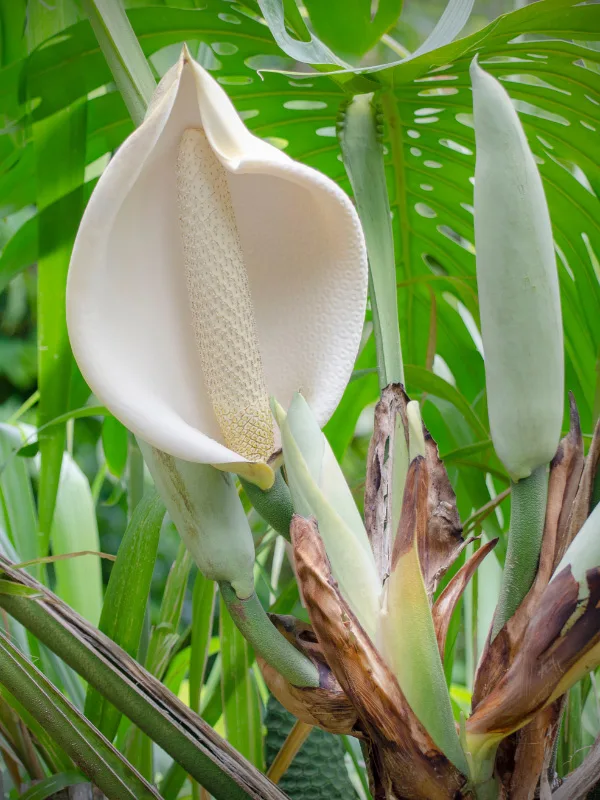
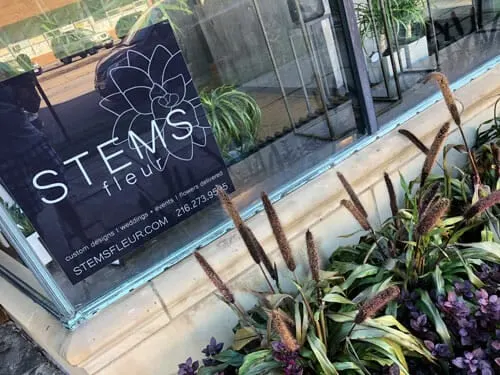
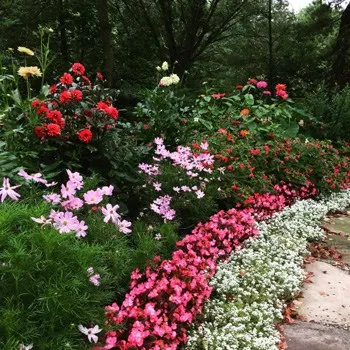
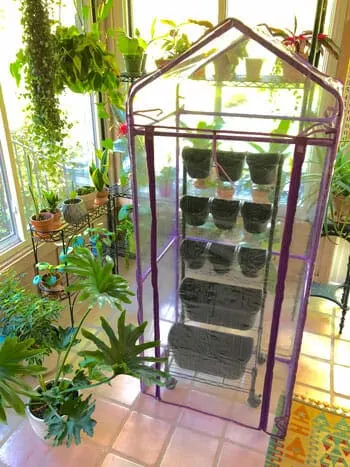
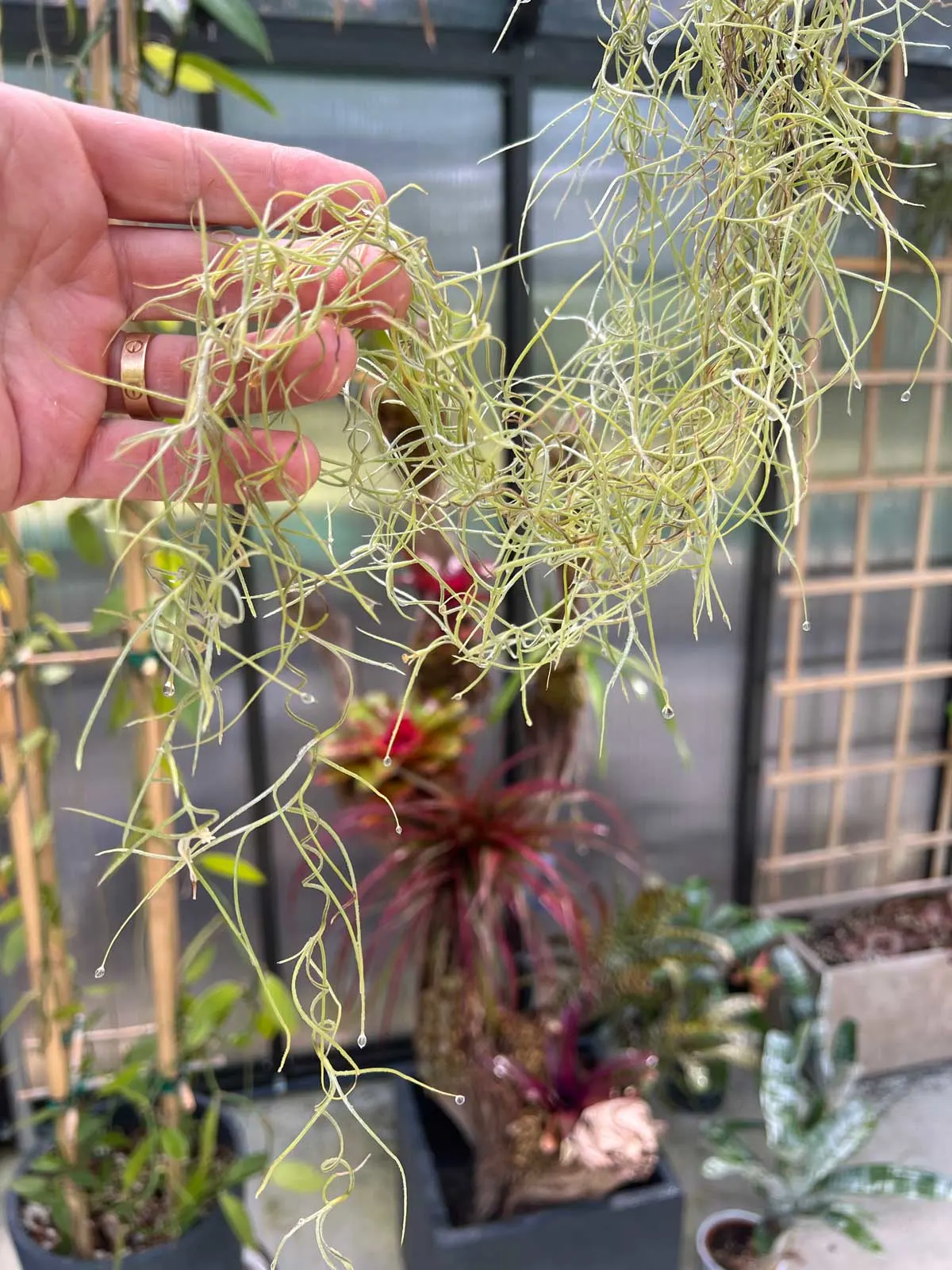
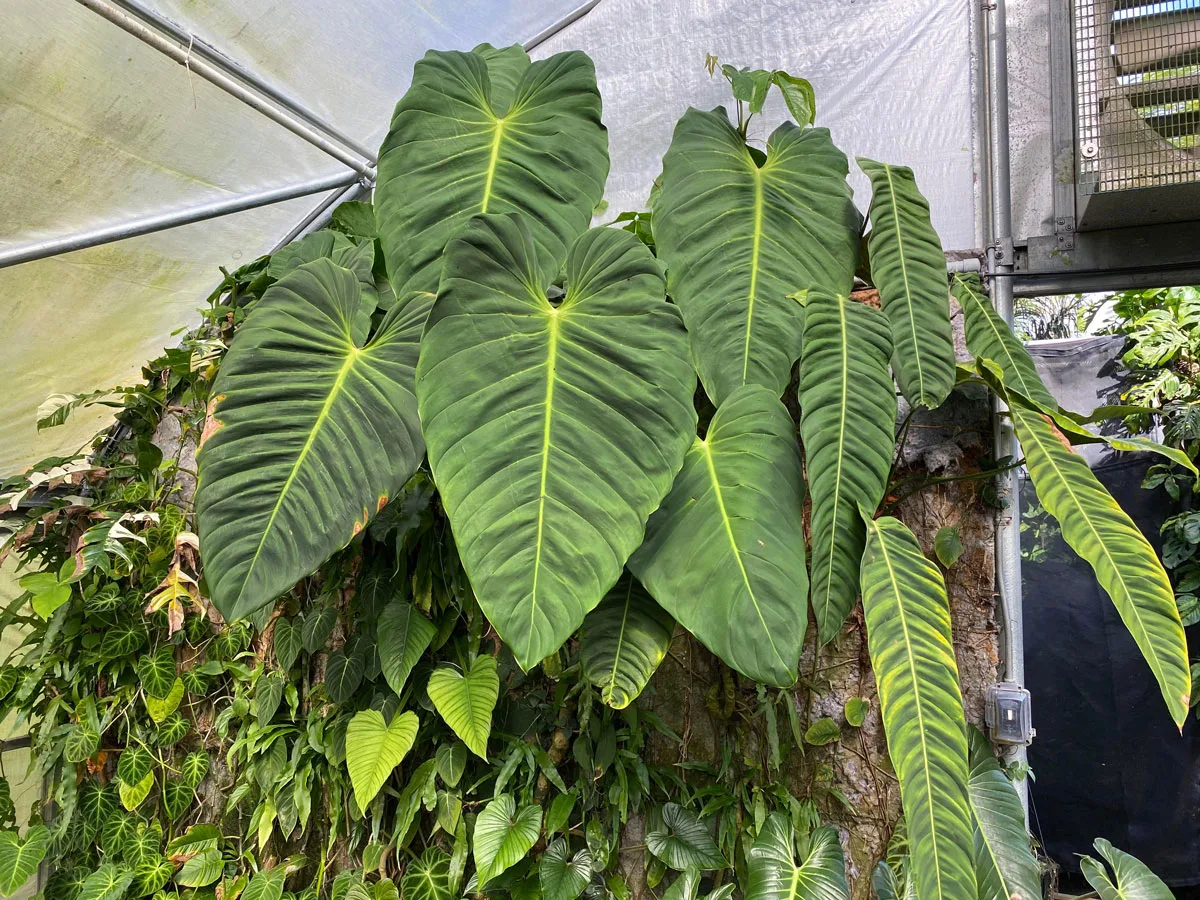
Kathy Davis
Monday 6th of May 2019
I really enjoyed this post, very informative! Confirmed some of things I knew, and all the tips and pointers I get from your posts. I especially appreciated the explanation of variegation, and how to keep a variegated plant from going all green. It was a very interesting read, thanks alot!!
[email protected]
Monday 6th of May 2019
I'm glad you enjoyed the post Kathy! Thanks for being a loyal reader and supporter :-)
Sharon Roth
Tuesday 16th of October 2018
Good reminders for the hose plant lover. Thanks for sharing this interview with us. I'll try not use my microwave anymore!
[email protected]
Tuesday 16th of October 2018
I'm glad you're stopping the microwave LOL
Gretchen
Monday 15th of October 2018
Great interview! Since I work in a retail Greenhouse I don’t usually order plants on line. However, I have ordered from Steve’s Leaves and was very impressed with the packaging and the obvious care that was put into the shipping. I definitely would recommend their plants! And I loved the comments about potting in huge pots right away, fertilizing and microwaving, haha! But that really does happen. I think people just get over-enthusiastic when they receive plant mail! Thanks for a great read!
[email protected]
Monday 15th of October 2018
Thank you! Their packaging is wonderful and everything arrived in great shape. The part about microwaving cracked me up too :-D